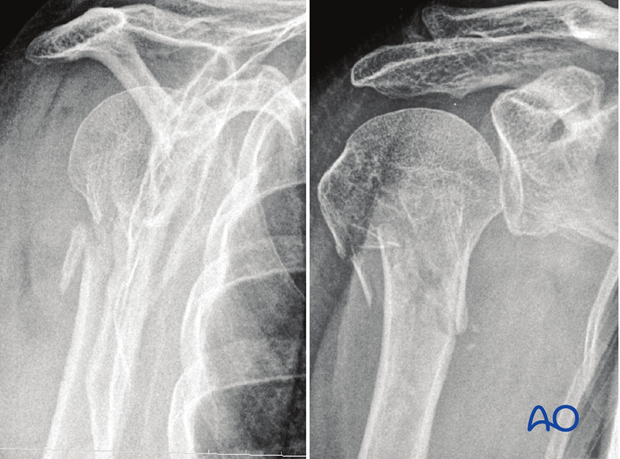Extraarticular 2-part, surgical neck, no impaction
General considerations
These fractures are unifocal extraarticular proximal humerus fractures with nonimpacted (displaced) metaphysis, also involving the surgical neck.
The distinguishing features of these fractures are a) their transmetaphyseal location at the level of the surgical neck and b) their instability due to lack of impaction.
They may be simple with angulation or translation, or they may be multifragmentary. The latter two can be associated with glenohumeral dislocations.
Because of the instability of these fractures, surgical fixation is often recommended.
Simple fracture with angulation
The fractures of this subgroup show an angulation of the metaphysis to the shaft in the surgical neck plane. They are most often unstable even though no comminution is present.
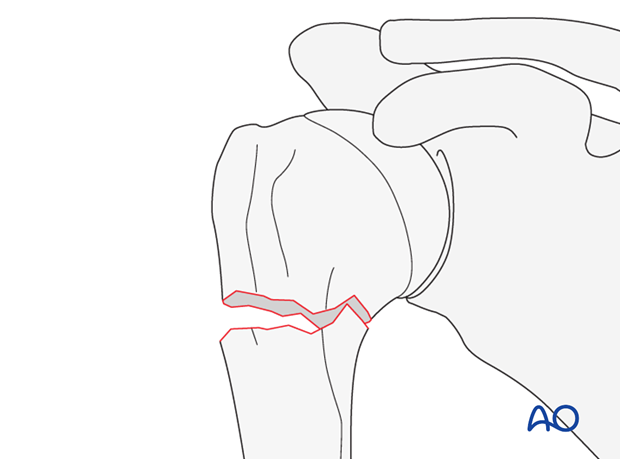
X-rays by courtesy of B Ockert, LMU Munich, Germany.
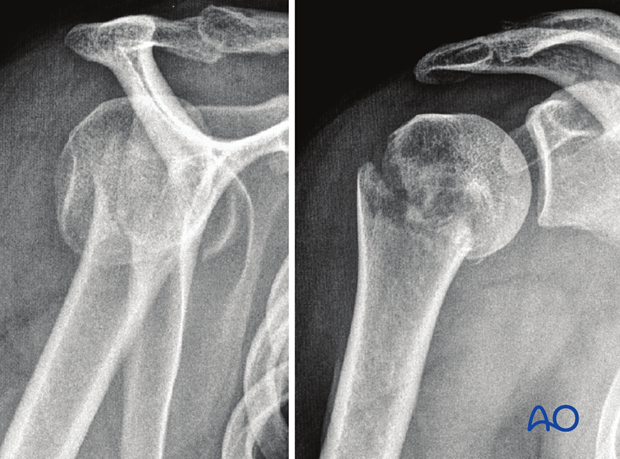
Simple fracture with translation
Fractures of this subgroup show a translated humeral shaft in any direction. They are highly unstable. The periosteum is disrupted. Depending on the involvement of the posteromedial periosteum the perfusion of the humeral head may be threatened.
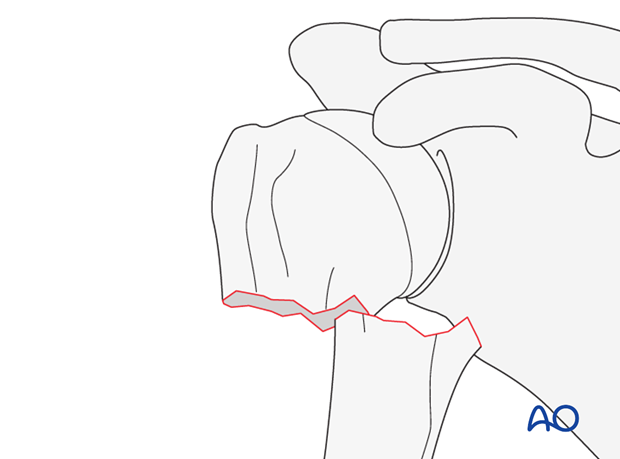
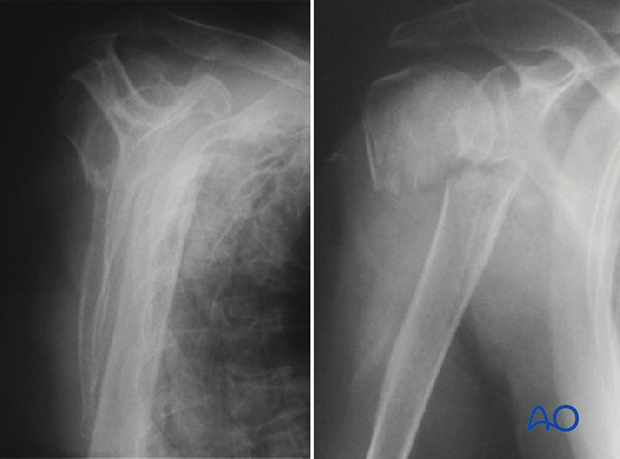
Multifragmentary fracture
Fractures of this subgroup show metaphyseal comminution. They are highly unstable and may occur as wedge fracture, complex fracture, or with a glenohumeral dislocation.
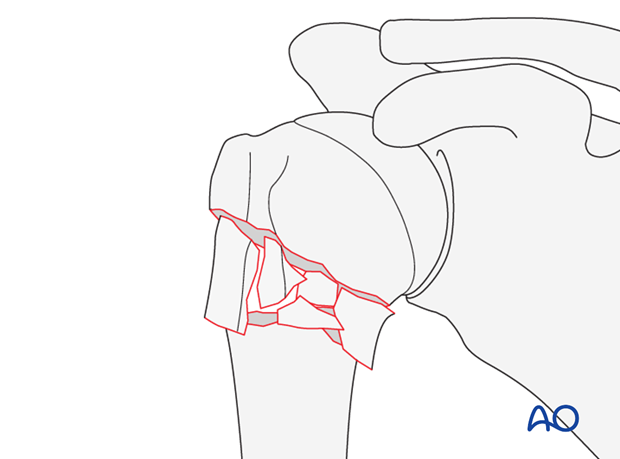
X-rays by courtesy of B Ockert, LMU Munich, Germany.
